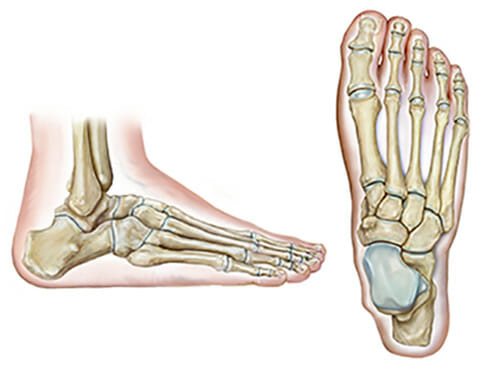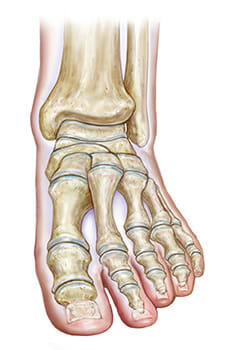
What Causes Ankle And Foot Fracture?
A ankle and foot fracture results when the bone is placed under more stress than it can handle. This stress can be acute or chronic. An example of an acute stress is a fall or sudden twisting injury that loads the bone with an excessive force. Stress fractures are caused by excessive chronic stresses placed on bone and result from high-impact, repetitive activities such as running.
There are many different kinds of ankle and foot fractures. Any bone in the ankle or foot can be fractured. The fracture type and severity depend on numerous factors, including mechanism of injury and age. Your specialist can discuss your type of fracture with you in more detail. Feel free to use the “notes” section within this brochure to document these details.
How Is A Ankle and Foot Fracture Diagnosed?
X-rays are crucial to diagnosing any fracture. Your specialist can correlate the X-rays with your mechanism of injury and physical examination to accurately diagnose your injury. In specific cases, a CT scan or MRI is necessary to give your specialist a better understanding of your ankle and foot injury.
What Are My Treatment Options?
At Summit, our surgeons take a conservative approach, which means we explore all non-surgical treatment options whenever possible and depending on your unique situation. The type and severity of your ankle and foot fracture will determine the course of treatment your foot and ankle physician recommends. In more severe cases, orthopedic surgery may be necessary.

Non-surgical Treatment
Not all ankle and foot fractures require surgery. Some may allow for immediate weight bearing in a boot or special shoe, while others may require a period of non–weight bearing to allow the bones to heal properly.
Surgical Treatment
For certain cases, surgery may be the best option to repair a ankle and foot fracture. The most common surgical techniques include:
- ORIF: Open Reduction Internal Fixation is a technique where your specialist can, through an incision, place a plate and/or screws to support the ankle and foot fracture. The size of the plate and the number of screws used depends on the size and severity of the fracture. After surgery, you will be placed in a splint that is to be worn until you see your specialist at the first postoperative visit.
- Pins: In certain situations, your specialist may elect to pin the bones together while they heal. Often the pins are percutaneous and will stick out of the skin. While the pins are in, it is very important that you follow the wound care instructions provided by your specialist. The pins need to stay clean and dry to minimize the risk of infection.
